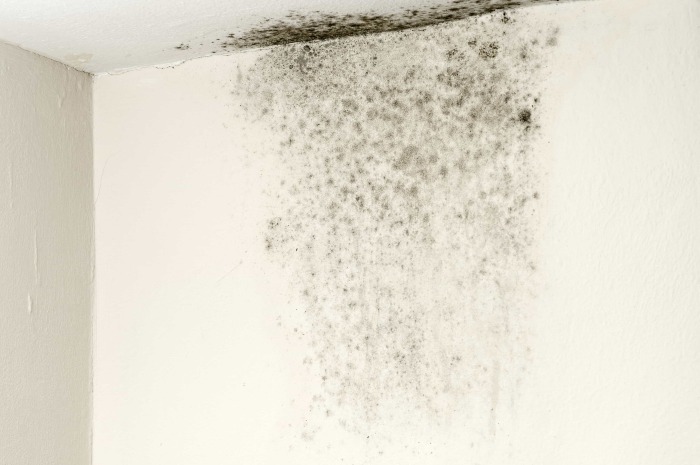What Are Molds?
What are molds?
by Florida Department of Health

Molds are types of fungi. They grow in the natural environment. Tiny particles of molds are found everywhere in indoor and outdoor air. In nature, molds help break down dead materials and can be found growing on soil, foods, plants and other items. Molds are also very common in buildings and homes. Mold needs moisture to grow. Indoors, mold growth can be found where humidity levels are high, like basements and showers. Molds produce microscopic cells called “spores” that are spread easily through the air. Spores can also be spread by water and insects. Live spores act like seeds, forming new mold colonies when they find the right conditions.
What makes mold grow?
Mold only needs a few things to grow and multiply:
- Nutrients (food)
- A suitable place to grow
- Moisture
Many building materials (such as wood, sheetrock, etc.) provide food that can support mold growth. Even dust that has settled on these materials or furniture can be a food source for molds. Molds can grow almost anywhere there is enough moisture or high humidity. Controlling moisture is the key to stopping indoor mold growth because all molds require water to grow. Moisture can come from:
- Flooding from the outside (stormwater, overflowing lakes, streams, storm surge, etc.
- Flooding from the indoor (overflow from sinks, tubs, toilets, air conditioner drain pans or sewerage systems)
- Condensation (caused by indoor humidity that is too high or surfaces that are too cold)
- Water leaks from outside the building (roof, walls, floors)
- Indoor plumbing leaks or broken water pipes
- Outdoor sprinkler spray hitting the walls or indoor fire sprinklers
- Poor venting of kitchen and bathroom moisture (steam from shower or cooking)
- Humidifier use
- Drying wet clothes indoors, or not venting clothes dryers outdoors (including electric dryers)
- House plants (overwatering, etc.)
- Moisture from our bodies (sweat, wet hair on pillows, breath)
- Warm, moist air from outdoors
- Liquid spills
What health problems can be caused by mold?
There are four kinds of health problems that come from exposure to mold: allergic illness, irritant effects, infection, and toxic effects. For people that are sensitive to molds, symptoms such as nasal and sinus irritation or congestion, dry hacking cough, wheezing, skin rashes or burning, watery or reddened eyes may occur. People with severe allergies to molds may have more serious reactions, such as hay-fever-like symptoms or shortness of breath. People with chronic illnesses or people with immune system problems may be more likely to get infections from certain molds, viruses, and bacteria.
Molds can also trigger asthma attacks in persons with asthma. Headaches, memory problems, mood swings, nosebleeds, and body aches and pains are sometimes reported in mold complaints, but the causes of these physical symptoms are not yet understood. The toxic effects of certain molds are not well understood and are currently a controversial topic in the medical and scientific community. There is evidence of specific long-term toxic effects from eating foods with mold toxins. Unfortunately, very little is known regarding the actual health risks from breathing in or skin contact with mold toxins. Allergic disease is now considered the most likely health problem related to mold exposures. Research into the possible health effects related to mold exposure continues today.
How can I tell if there is mold in my home, or should I test my home for mold?
Indoor mold growth can usually be seen or smelled. In most cases, if visible mold growth is present, sampling is not needed. There are no health or exposure-based standards that you can use to evaluate a mold sampling result. The Florida Department of Health does not recommend mold testing or sampling to see if you have a mold problem, or to see what kind of mold might be growing. Sampling for mold in the air can be expensive and, if done, should only be done by experienced professionals. Investigate a mold problem; don’t test.
Look for visible mold growth (it may look cottony, velvety, rough, or leathery and have different colors like white, gray, brown, black, yellow, or green). Mold often appears as a staining or fuzzy growth on furniture or building materials (walls, ceilings, or anything made of wood or paper). Look for signs of moisture or water damage (water leaks, standing water, water stains, condensation, etc.).
- Check around air handling units (air conditioners, furnaces) for standing water. Routinely inspect the evaporator coils, liner surfaces, drain pans, and drain lines.
- Search areas where you notice mold odors. If you can smell an earthy or musty odor, you may have a mold problem.
- If mold-allergic people have some of the symptoms listed above when in your home, you may have a mold problem.
- How can I be exposed to mold?
Mold is virtually everywhere, floating in the air and on all surfaces. People are exposed to molds 24 hours a day, seven days a week, and 365 days a year. Exposures increase when indoor moldy materials become dried, damaged or disturbed, causing spores and other mold cells to be released into the air and then inhaled. Elevated exposure can also occur if people directly handle moldy materials or accidentally eat mold.
How much mold does it take to make me sick?
It depends on the situation and the person. This question is difficult to answer in the same way it’s hard to say how much sun causes a sunburn: the amount varies from person to person. What one person can tolerate with little or no effect may cause symptoms in another individual.
The long-term presence of indoor mold may eventually become unhealthy for anyone. Those with special health concerns should consult a medical doctor if they feel their health is affected by indoor mold. The following types of people may be affected sooner and more severely than others:
- Babies and children
- Elderly persons
- Individuals with chronic respiratory conditions or allergies or asthma
- Persons having weakened immune systems (for example, people with HIV or AIDS, chemotherapy patients, or organ transplant recipients)
How can I tell when Stachybotrys chartarum is present in my home?
Many molds are black but are not Stachybotrys. For example, the black mold often found between bathroom tiles is not Stachybotrys. Stachybotrys can be identified only by specially trained professionals through a microscopic exam or by cultures. The Florida Department of Health does not recommend that people sample mold growth in their home. All indoor mold growth should be removed, regardless of type.
Should I use an ozone generator to address an existing mold problem?
No. Ozone irritates lungs and is not likely to be effective at addressing an indoor mold problem. No one should expose themselves or others to ozone on purpose. Address the cause of the mold (usually moisture) and then remove the mold by cleaning surfaces or removing moldy materials.
Are some molds more hazardous than others?
Some types of molds can produce chemicals called “mycotoxins”. These molds are common, and are sometimes referred to as “toxic mold”. There are very few reports that “toxic molds” inside homes can cause unique or rare health conditions. If you think you have a mold problem in your home, you do not need to find out what type of mold you may have. All molds should be treated the same when it comes to health risks and removal. All indoor mold growth should be removed promptly, no matter what type(s) of mold is present, or whether or not it can produce mycotoxins.
What is Stachybotrys chartarum?
Stachybotrys chartarum (also known as Stachybotrys atra) is a greenish-black mold that can grow on materials such as drywall or sheetrock, ceiling tiles, and wood when they become moist or water-damaged. Not all greenish-black molds are Stachybotrys chartarum. Some strains of Stachybotrys chartarum may produce mycotoxins. Whether a mold produces mycotoxins depends on what the mold is growing on and conditions such as temperature, pH, humidity or other factors.
When mycotoxins are present, they occur in both living and dead mold spores and may be present in materials that have become contaminated with molds. While Stachybotrys is growing, a wet slime layer covers its spores, preventing them from becoming airborne. When the mold dies and dries up, air currents or physical handling can cause spores to become airborne.
Currently, there is no test to determine whether Stachybotrys growth found in buildings is producing toxins. There is also no blood or urine test that can tell if an individual has been exposed to Stachybotrys chartarum spores or its toxins.
